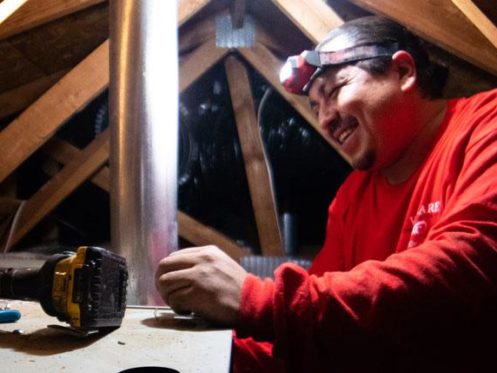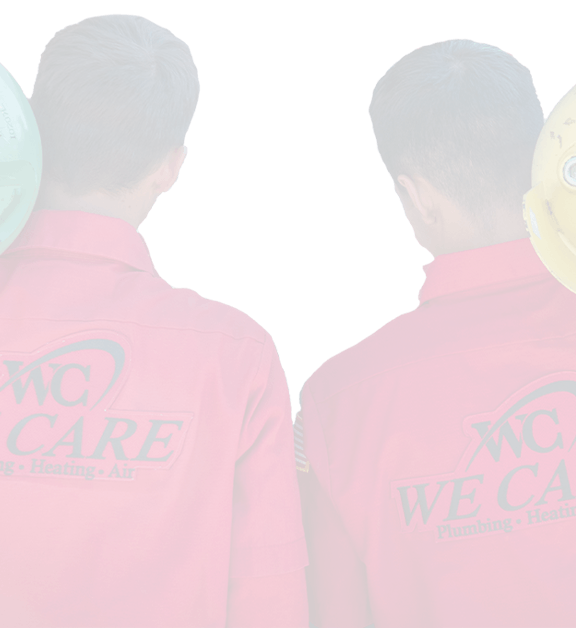Furnace experts recommend a maintenance appointment on an annual basis, and such service is actually required by most furnace warranties. Many HVAC companies offer maintenance programs that let you have your entire system inspected and maintained at a discount. Tune-ups can vary from company to company and be based on your particular equipment, but the steps discussed below are rather common and should generally be expected. Be mindful that many of these steps will take place at the same time, but they are isolated here for the purposes of the discussion.
Inspect the Ventilation
The ventilation system is a key component of your home heating, and your technician will inspect all of the integral elements. This includes the registers that draw the air from the home into the system and the vents that distribute the warmed air throughout the home. Your technician will ensure that these inlets and outlets are open and clean.
Every several years or so, it is recommended that you have your ductwork cleaned, and that is the appointment during which the technician will not just clean the ducts but also inspect them via camera for problems with the structure, fittings and insulation. In regards to checking for proper airflow, your technician can do that directly from the registers while the system is on.
Swap Out HVAC Filters
As a general rule, HVAC filters should be changed every three months. However, it is better to check them on a monthly basis and swap them out when you can see the dust accumulation. During your seasonal maintenance appointment, your technician will double-check them and change them out as needed. If you participate in a maintenance plan, your technician may return on a regular basis to do this. If you do not, avoid waiting for your next appointment. Check them yourself, and swap them out as necessary.
Examine and Clean the Heat Exchanger
The heat exchanger is the most important component of your furnace. It is responsible for the heated air, and it’s the part that will most likely dictate the lifespan of your system. Dust and dirt can accumulate on the heat exchanger, particularly during periods of inactivity. Your technician will clean it with a chemical agent and then perform a visual inspection to ensure that there are no signs of wear, including corrosion. If necessary, your technician will replace old gaskets with new ones.
Inspect and Clean the Blower
The blower is also integral to your furnace and, if applicable, your air conditioner because it generates the forced air that is sent throughout your home. Your technician will first clean your blower. He or she will perform a visual inspection of all moving parts and perform a test of the amp draw to ensure that it is in the optimal range. The blower belt will be checked for wear and tear. If it is in good shape, it will generally need to be adjusted. If not, it will need to be replaced. There are also a number of moving parts in a blower that require lubrication.
Check All Electrical Connections
Your technician will inspect all of the electrical connections throughout your heating system. This involves cleaning the connections as needed, tightening them if necessary and replacing any wires that have begun to wear out. If you have an electric furnace, this task is more involved since the technician has to examine the main control board, run testing on it and service it as needed.
Check the Burner and Flame Sensor
If, on the other hand, you have a furnace that burns natural gas, heating oil or another fuel source, it will have a pilot, a burner and a flame sensor. The biggest issue with these parts is that they can accumulate carbon over time, and that reduces the efficiency of the system. All of these parts need to be cleaned, and if the buildup is excessive, the technician will need to diagnose and correct what is causing it. Your technician will also test the pressure of the system in order to ensure that it is in the optimal range.
Examine All Belts for Signs of Damage
Not all furnaces have belts, but on those that do, there can be a couple or more present. A technician has to inspect all of these to ensure that they are oriented correctly and appropriately tight. Belts will wear out over time. If any belt is cracked or frayed, your technician will replace it. When it comes to belts, it is better to replace them at the first sign of trouble than later down the road.
Lubricate Moving Parts
There are many moving parts in most furnace systems, and keeping them lubricated is one of the most important aspects of maximizing furnace lifespan. Your technician will clean the old lubrication from these parts. He or she will then visually inspect them for wear and tear and, if everything checks out, apply fresh lubricant oil that will protect the parts until the next checkup.
Inspect Condensate Drain and Clean as Needed
Many homeowners associate their condensate line with their air conditioners, but some gas and electric furnaces require them as well. Your technician will ensure that the drainage is working and that it is appropriately oriented and clean. In some cases, the technician may need to clear the line.
Inspect and Calibrate the Thermostat
As part of your furnace maintenance, your technician will remove the thermostat face and clean the electrical connections. The technician will then check the reading and calibrate it as necessary.
Test Safety Controls and Startup Cycle
There is old advice in the heating industry that your local HVAC technician should be the first person to start your furnace each year. Technicians will generally not run the heating until everything has been cleaned, inspected and lubricated. The safety controls will also be inspected and tested first. When you start the furnace, you burn the accumulation on the heat exchanger. Belts can be put under a lot of strain and old lube may not work well. That’s why it’s a good idea to have a professional nearby when your furnace kicks on for the first time during the cold season.
Test Carbon Monoxide Levels
Last but not least, your technician will test the carbon monoxide produced by the system to ensure that it is in a safe range. If you have carbon monoxide detectors, the technician may also inspect them to ensure that they are working and properly located.
Your Furnace Maintenance Professionals in Southern California
We Care Plumbing, Heating and Air has more than 20 years of experience serving homeowners in Murrieta, Orange, Temecula and the surrounding areas. Our approach to customer service has earned us numerous awards, including several Dave Lennox Awards and Angie’s List Super Service Awards. Our team is available for furnace maintenance, installation or repair on a wide range of heating equipment. We also install, maintain and repair air conditioners. Our plumbing services include water filtration, drain cleaning and installation, repair and maintenance of water and sewage lines, faucets, toilets, showers, sump pumps and water heaters. We also perform slab leak detection. Call us today to schedule an appointment at a time convenient to you.
***Disclaimer: Some items listed may result in additional fees beyond a normal maintenance fee.***







